They built the widened coral reef
2-channel video installation, 2019
We find ourselves in an unnamed compound with a group of co-workers engaged in conversations. They seem strangely distanced from each other, even though they are politely trying to converse. There is something unsaid in the conversations, something which has already happened and something which is still about to happen. A disaster lurks on the horizon, as the-coworkers are trying to perform their routines as if nothing is going to happen.
A restaurant owner is accompanying the house pianist through a seemingly infinite industrial kitchen where chefs cut and chop, sending vegetables flying. A couple eats dinner and speaks in great detail about the weather, while the landscape rushes past the restaurant's window as if they were sitting in a train compartment. The linear movement links the various scenes into a formal narrative of being on parallel lines that never meet. Only a few things seem to connect them, as the co-workers seem preoccupied with a group of musicians of which they can constantly hear, but which are always out of sight. Only when something disruptive enters the narrative, like a parasite, does disorientation arise.
Video. They built the widened coral reef. 19 min. 1-channel screening version (originally presented as a 2-channel video installation).
Statement by Mai Misfeldt, Claus Carstensen & Anders Kold. Written justification for awarding 'They built the widened coral reef' the 15 June Foundation's Honorary Award in 2019:
"The tent poles are torn up, and it is not easy to find either a foothold or a point of view in Tholander's film work 'They built the widened coral reef'. With references to both orchestras, kitchens and restaurants, we are led on an assembly line from scenario to scenario. The point is simply that, in the usual sense, we are getting nowhere. There is not a harmonious narrative, but neither is the avant-garde's obvious onslaught on the old stories. Nothing really happens other than that our trust in frames and formats is slowly eroded. You can obviously point to leading figures such as American Ian Chang and British Ed Atkins. The images are perfect, as technology now makes possible, but it is in the coexistence of speech and writing that Tholander's work comes across as eerie and probably as precise in the description of our time.
Tholander's work works, and this is praise, in its constant drift between presence and indeterminate distance. Flesh and blood is not really relevant to talk about, and that is precisely the point. And one senses a condition. It's as if, between time-lapses, commercial jingles and ornaments that only the digital world can produce, we're on our way, but nowhere really. There are, you understand, delays on the road, links are delayed, connections as well and something is interrupted. It's safe to say. Artificial intelligence weaves itself into this uncanny world between two worlds as an obvious possibility and topic."
Review by Louise Steiwer, Kunsten.nu, 2019:
"Mark Tholander, who, as part of the artist collective Piscine, already has a lot of exhibition experience, convinces with probably the exhibition's most solid work. The video installation 'They built the widened coral reef' was recorded in a green screen room. Subsequently, hands and faces are edited out of the finished work, which is why the clothes now seem to dance around on their own. Paired with computer-animated backgrounds, it gives a fun effect that adds a tactile, physical element to the otherwise somewhat smooth animation. We find ourselves in a restaurant, where several different scenes play out in continuation of each other (...) The restaurant owner shows the house pianist through a really large industrial kitchen, where the vegetables literally fly through the air. A couple is having dinner and talking in great detail about the weather, while the landscape rushes past the restaurant window as if they were sitting in a train compartment. (...) The camera direction ties the different scenes together into a formal narrative about being on parallel lines that never meet."
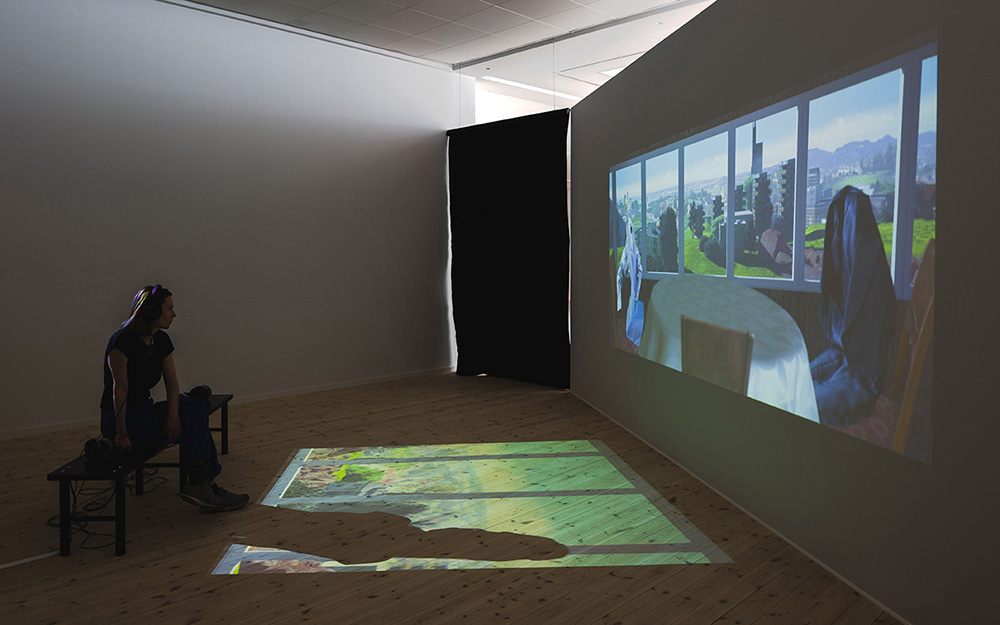
Installation view. Kunsthal Aarhus, Aarhus, Denmark. Photo: Mikkel Kaldal.
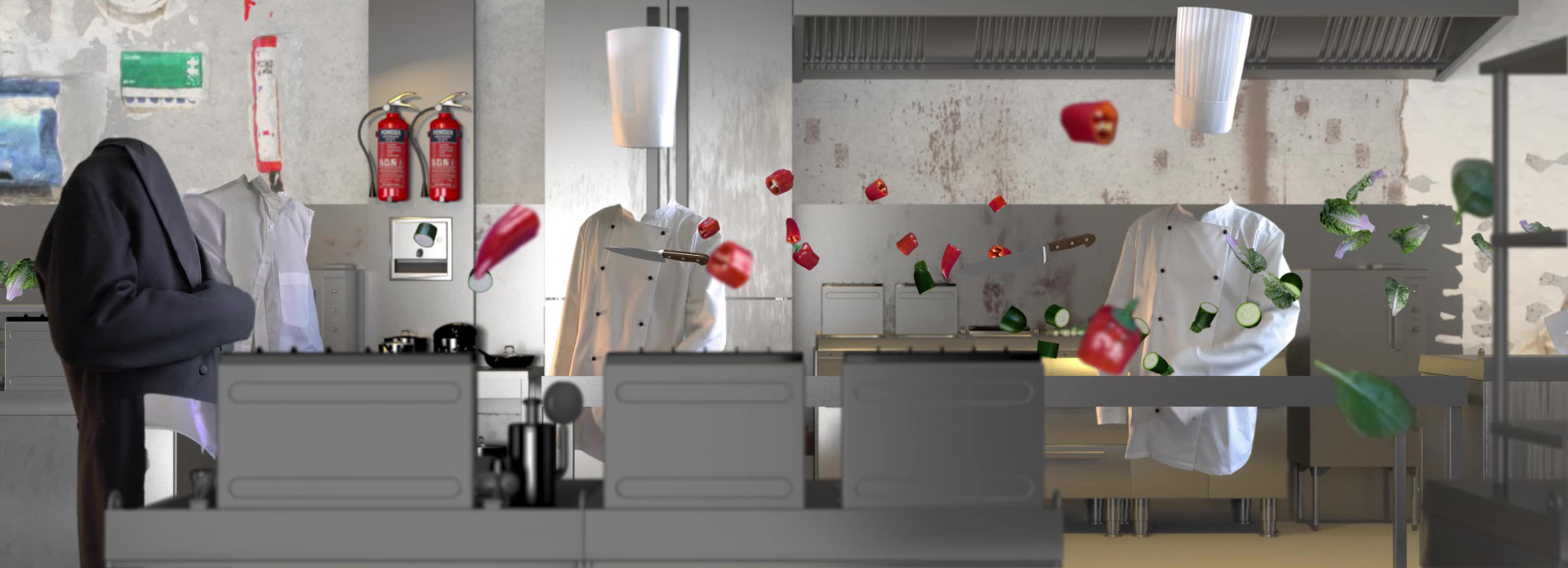
Video still
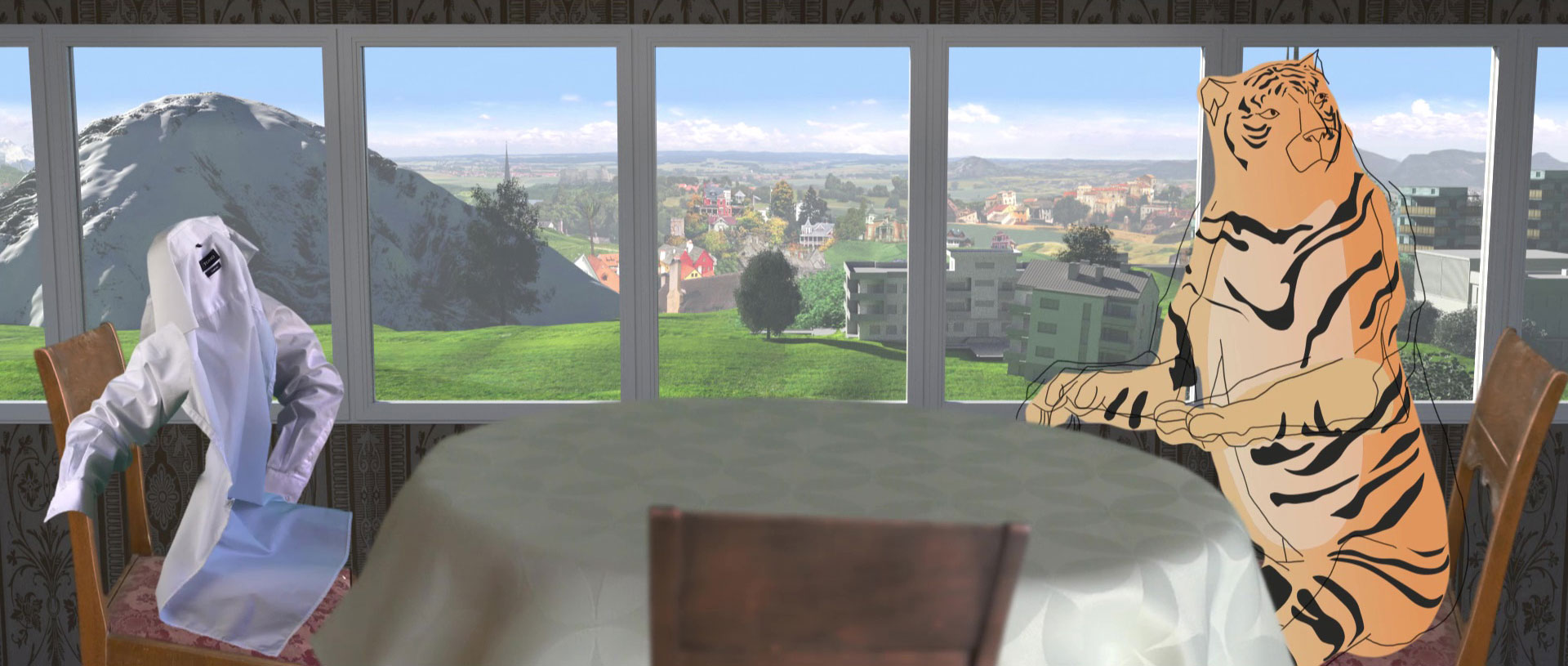
Video still
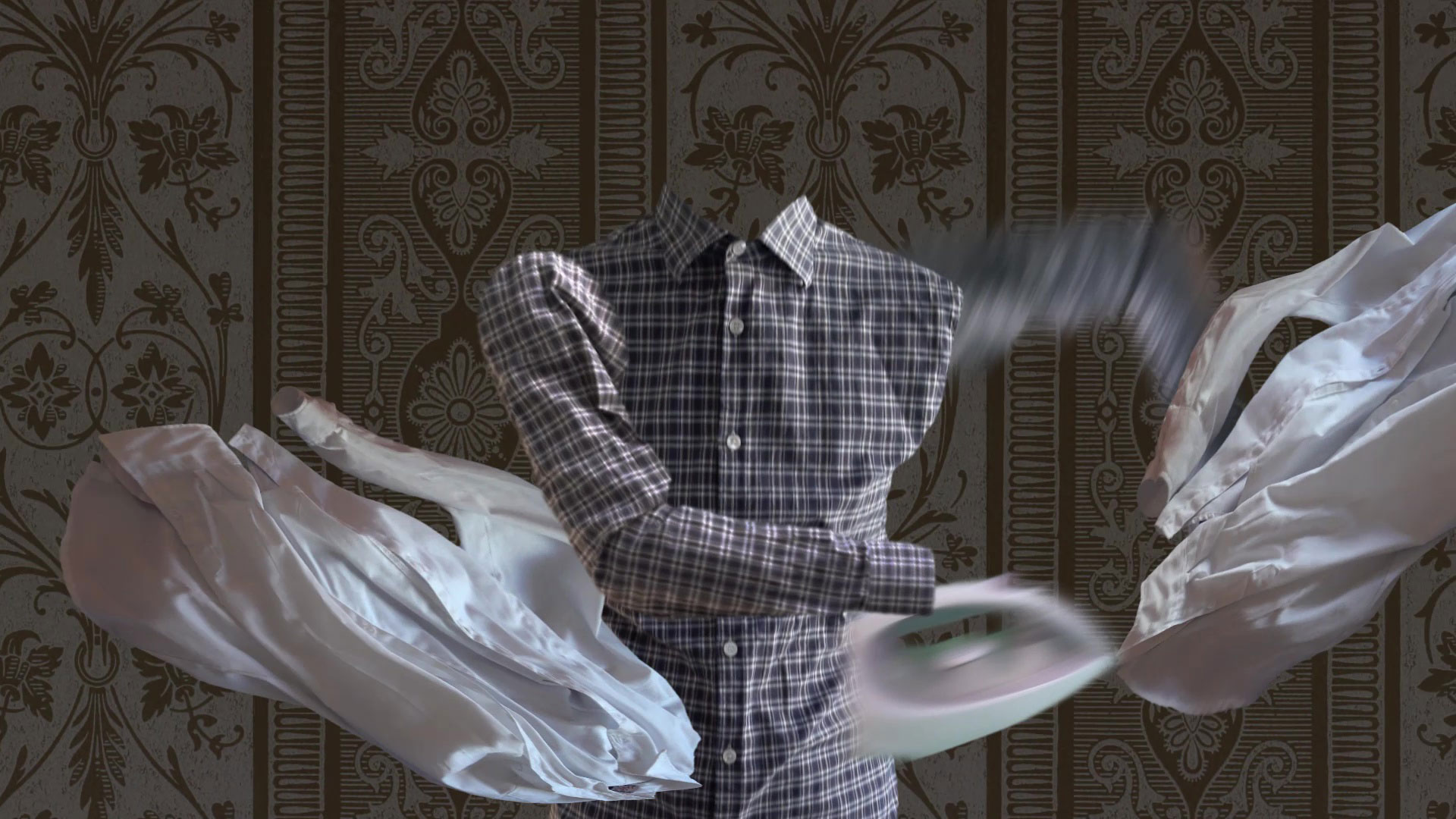
Video still
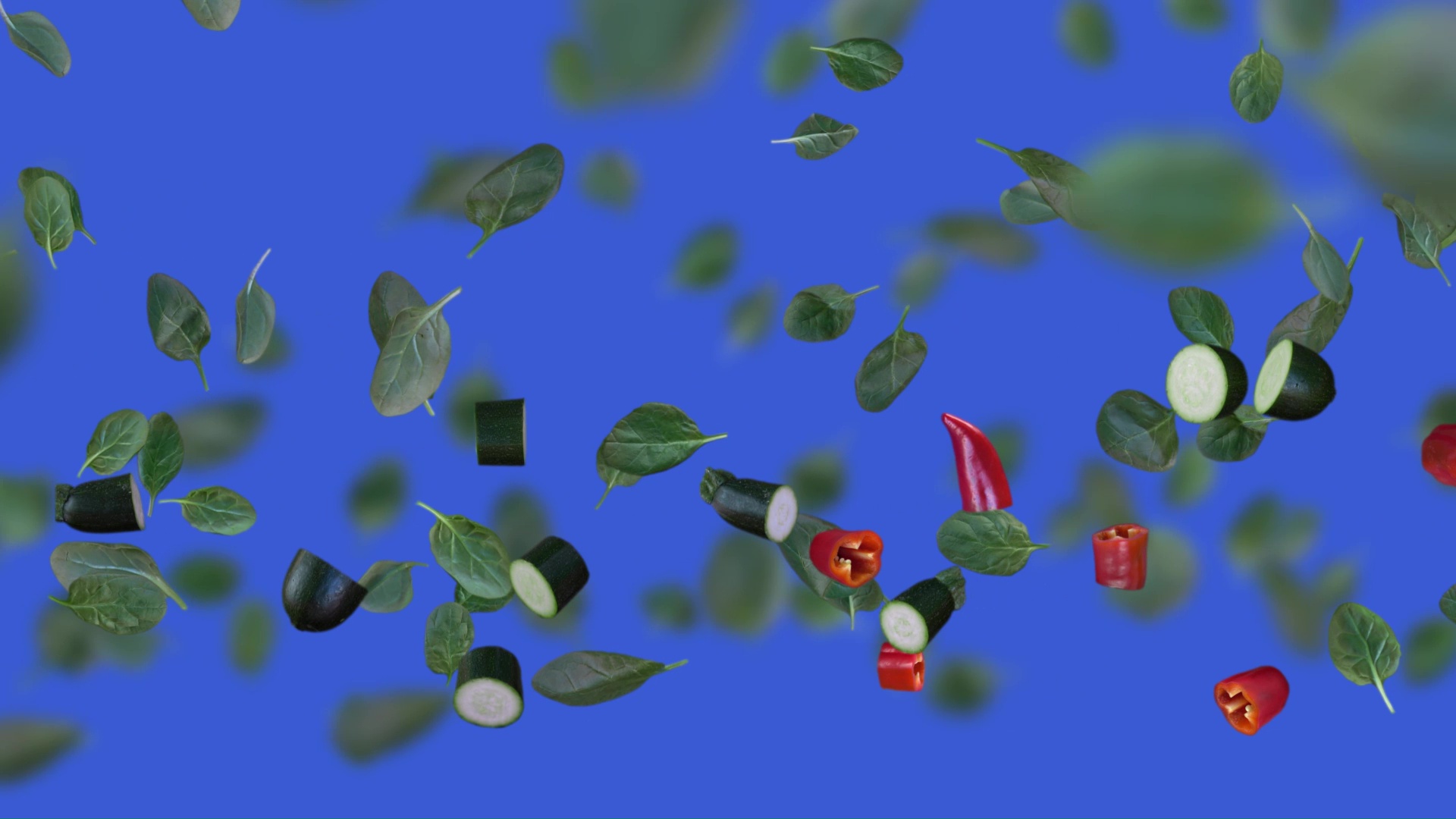
Video still
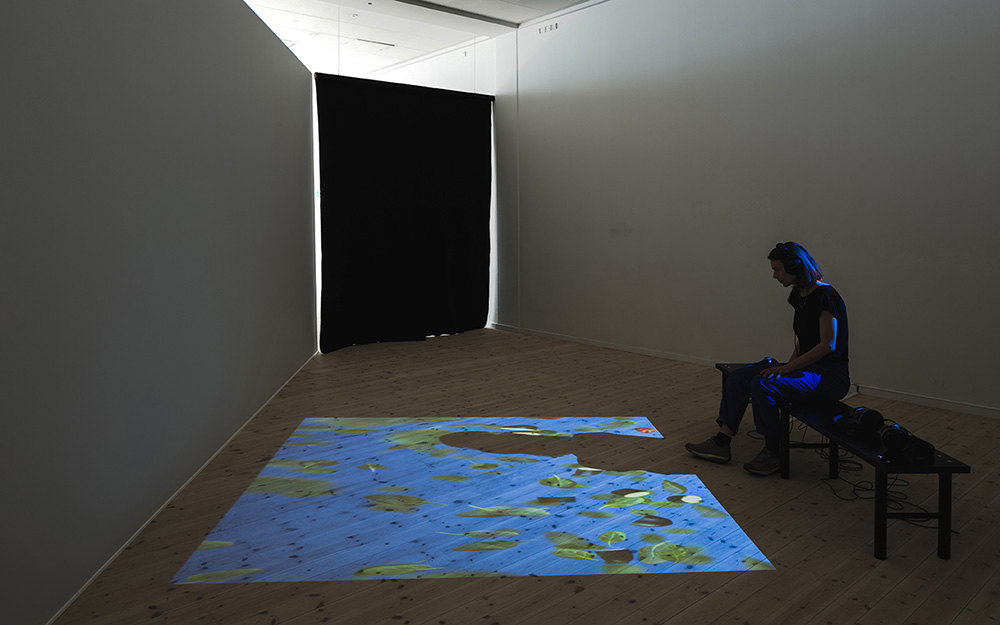
Installation view. Kunsthal Aarhus, Aarhus, Denmark. Photo: Mikkel Kaldal.
"What do you think of the weather?", the restaurant owner asks. When people can’t figure out what to say to each other, they start to talk about the weather. The weather is often the subject that comes up in an awkward conversation: when we have nothing to say, or when we feel distanced, we talk about something that isn’t really interesting at all. It is a kind of non-subject. An empty speech. We talk, but the talking contains nothing. But at the same time, the weather is the common condition for all of us, which is probably why we grab that subject in an awkward situation. When we don’t know what connects us, we at least know that the weather does. That which contains nothing is most often the common condition. But what if there is something unsettling about the weather? A change which is hard to grasp in our common condition. In the fronts.
Different characters each exist in their own closed set, moving through a straight line, and even the foreground and background appear to slip past each other like parallel narratives. Suddenly, everything is interrupted by a karaoke track: "The link is delayed along the road. Connection is late on the road. This is the way". The camera movement links the various scenes into a formal narrative of being on parallel lines that never meet.
The characters of the film try to live their lives according to how they have always done. They try to fit their jobs and try to make life run smoothly. But at the same time, they can constantly sense something external that threatens to disrupt this structure. It's a bit like a hint at them, where they sometimes notice these disturbances that threaten to turn their everyday lives upside down, after which they immediately return to everyday life as if nothing has happened.
The musicians are always present in the soundscape, but never visually. From the character's perspective, the musicians can constantly be heard, playing along, but never in sight. The only musician we see visually is the pianist, and he seems to be the only person who has a direct connection to the musicians. In an orchestra, the melody creates the illusion of connectedness, and as such, the musicians point towards the conditions of intersubjectivity. And also, the musicians become something that seeps into a system: a parasite or an otherness into the known. The musicians are always in the plural and always in the blind spot: something that influences normality and at the same time supports it. That which cannot be experienced, but which affects all of the experience: the common.
The film is a mixture of different animation techniques: a hybrid out-of-sync animation method. Every object in the scenes moves in its own path and in different frame rates. Each part follows its own path, but co-exist in the same space. Objects are not only out-of-sync with each other, but also out-of-sync with themselves. The animation technique as such responds to the idea of disconnection. The instrumental parts that accompany the film as a backdrop were also constructed so that at some times the musicians played in sync with each other, and at other times slipped out of sync. In this way, we operated with a backdrop that was both synchronous and asynchronous, oriented and disoriented, and thus switched between being an unnoticed background and becoming a character on its own.
In the film, the notion of dying lurks behind every corner. Both the kitchen and the restaurant are a kind of apparatus for the countdown. The kitchen is a straight line where the characters wander a single path. The restaurant appears as a kind of train carriage that also has a linear direction. As soon as one speaks of lines, one speaks of numbers, since the doctrine of numbers is the doctrine of a line, and as soon as one speaks of a count, one also speaks of a temporality having a beginning and an end. Death is a phenomenon which belongs to the common, and which cannot be understood as a phenomenon. It is the one experience that we share, but whose experience we can not transfer to each other. In this way, death is at the same time completely individual and common - both never seen and always in sight.
The tiger is inspired by a children's book called The Tiger Who Came To Tea. In it, we meet a small child and her parents, living in a middle-class house. One day, a tiger comes to visit and tells it is hungry. They invite it to tea and cake. But after the tiger has eaten the cake and drunk the tea, it continues to the fridge and empties it, and afterward, it eats all the food in the kitchen and drinks all the water in the tap. After that, it says thanks and leaves. The child is afraid that her father will get mad when he returns from work, but when he does, he says that it is all right. Then they go to a restaurant instead. The tiger in this story becomes a special kind of intrusion into the family home: an intrusion that consumes everything, while at the same time, nothing really happens.
Credits:
Script:
Mark Tholander
Voices:
Kevin J. Bond
Janlyn Williams
Aundrea Sayrie
Joe Wilson Kolb
Camera:
Mark Tholander
Animation of filmed footage:
Mark Tholander
CGI:
Lars Hemmingsen Nørgaard (Midtjysk 3D Service)
Elisabet Hau (Midtjysk 3D Service)
Vector animation (tiger):
Sophia Ioannou Gjerding
Hand-drawn animation (tiger):
Mark Tholander
Karaoke animation:
Sergei Arzumanov
Composition (music):
Mark Tholander
Bas:
Damjan Kapor
Mitch Cockman
Guitar:
David Tobias Bonde Jensen
Nicholas Di Gregorio
Sergei Arzumanov
Drums:
Eli Mine
Emiliano Di Fiori
Piano:
Mark Tholander
Marimba:
Andrew Nittoli
Trumpet:
Matt Giella
Mihai Sorohan
Trombone:
Rainers Vestmanis
Miks Jukumsons-Jukumnieks
Victor Fuenmayor
English horn:
Jennifer Stucki
Synthesizer:
Mark Tholander
Sound editing / mixing:
William Kudahl
((( Go Back )
:::::::::::::::
:::::::::::::::











